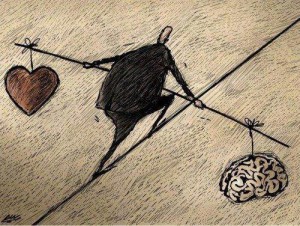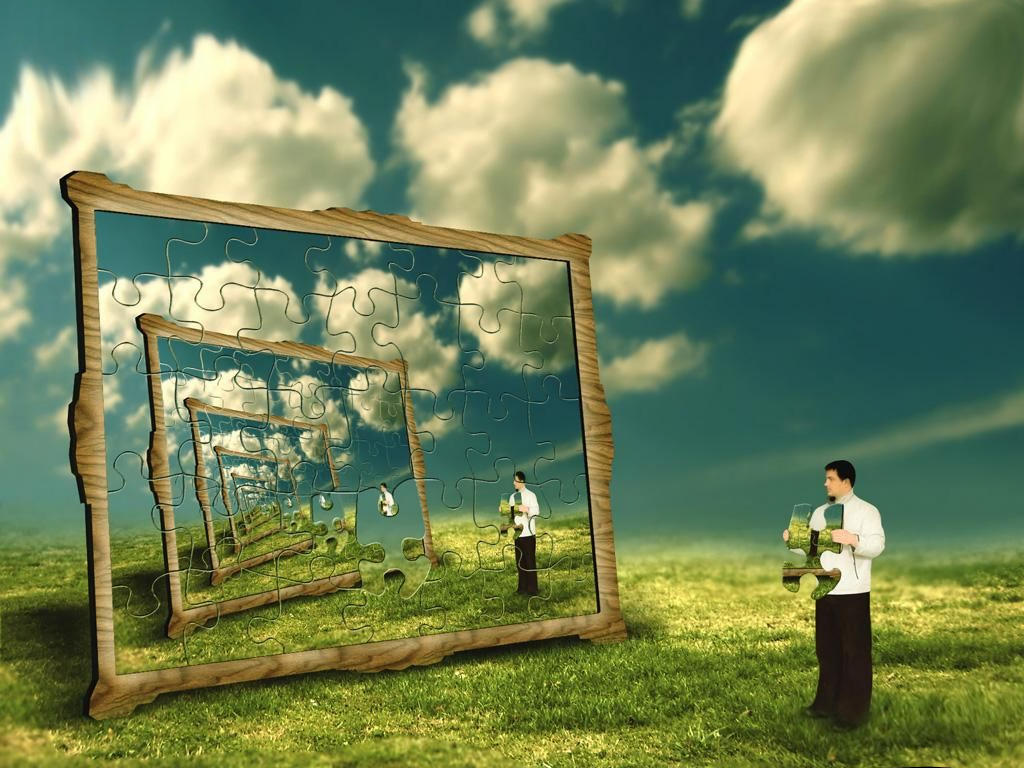In anticipation of the meeting of 20 and 21 June 2020, which is held in Tivoli under the title: “Bioregionalism. General states of ecosophy ", my friend Italo Carrarini asked me to express the sense of bioregionalism in a few words. I will say that bioregionalism is the art of knowing how to sing life in harmony with nature. But I must add something to explain conceptually the meaning of this song.
What is meant by "bioregionalism"? This term does not denote an ethnic belonging but the ability to relate to the place where one resides considering it as one's home, as an expansion of oneself. The definition becomes appropriate when you live in harmony with the territory and with the vital elements that compose it. In fact, anyone can be a bioregionalist regardless of their origin if they follow the practice of deep ecology. It is a convergence, an osmosis, which is slowly being created between us and the world in which we are immersed, like water in water. It is a holistic awareness and consequent solidarity action. It is an essential aspect of caring for daily life and of the conscious presence in the place ...
Trying to give an appropriate explanation of the concepts related to neologisms - which: bioregionalism, deep ecology, lay spirituality - we must resort to semantics and glottology, since there is no neologism that does not originate in other similar words. Perhaps it would not even be necessary to find new terms if the original word, possibly combined with an adjective, can make sense of what you want to describe.
For example, the neologism "bioregionalism" evokes an even more reductive image of the real meaning that is implied by this word. Since the identification of a "bioregional" area does not take into account only the living but the inorganic, morphological, geographic and geological whole of the chosen territory, including - obviously - the botanical and zoological elements that thrive there. In short, the homogeneity of the area defined as "bioregion" is examined and a slight line of demarcation (non-division) is drawn to identify its "borders". It goes without saying that these boundaries are simply theoretical, since the bioregional organism of the Earth is in truth an indivisible whole. By analogy we could define the bioregions as the organs of the Earth organism.
Going forward. In the original meaning of the word "ecology", compared to its similar "environmentalism" a difference of understanding is already outlined, even if the exact translation of "ecology" is "study of the environment". While in "environmentalism" the criterion of simple conservation is assumed. When the adjective "deep" is added to the term "ecology", there is a tendency to broaden its original meaning by integrating the concept of further research within the environmental structure. In short, you go to discover the substrate and not only observe the surface, the skin of the environment.
The same applies to the word spirituality and its qualification "lay". In this case we try to give a "free" connotation to spirituality commonly understood as an expression of religion. Spirituality is the intelligence consciousness that pervades life, it is its perfume, and it is absolutely not a result of religion, indeed often religion tends to clip and hide this "natural" spirituality present in all things.
I find this discourse on the value of language and the recognition and legitimization of its path in history, extremely cogent and useful to the ecological cause - I say "ecological" because it does not seem to me a diminutive term unless we want to make words a comparison term for our personal ideas - glottology, and above all the ability to evoke concepts through words and to clarify their meaning, has nothing to do - according to me - with the discussions on the goat wool thread, whether or not these themes enter the ecological strand "of the deep". In fact, it cannot be traced back to a "founder" (intended as the inventor of the used neologism) of bioregional practice, deep ecology or lay spirituality. As these terms describe something that has always existed.
Glottology and semantics have a right to enter the ecological discourse, above all to clarify the actions related to ecology, profound ecology, and say anything. However, these evoked concepts are not new to man ... and neologisms are often used, to do a favor for copy right politics, and it is only a concession to "politics", in fact ...
But deep ecology, also called ecosophy, is a fact, a reality, and cannot be described in philosophical terms except by abstracting ourselves from the context of ecology itself. Living in deeds and not loving the dialectical diatribes but loving to say "bread with bread and wine with wine" I must confirm that deep ecology is the sincere and honest practice of living in synergy with all living beings and with the natural environment.
In this "natural" dimension there is no room for preconceived ideologies and therefore precise for the umpteenth time that: the Italian Bioregional Network is for harmonious, loving, kind and supportive living on Earth, and it does not simply represent a "label" .
Paolo D'Arpini
In this "natural" dimension there is no room for preconceived ideologies and therefore precise for the umpteenth time that: the Italian Bioregional Network is for harmonious, loving, kind and supportive living on Earth, and it does not simply represent a "label" .
Paolo D'Arpini
spiritolaico@gmail.com
Testo italiano:
In
previsione dell'incontro del 20 e 21 giugno 2020, che si tiene a
Tivoli con il titolo: “Bioregionalismo. Stati generali
dell'ecosofia”, l'amico Italo Carrarini mi ha chiesto di esprimere il
senso del bioregionalismo in poche parole. Dirò che il
bioregionalismo è l'arte di saper cantare la vita in armonia con la
natura. Ma qualcosa debbo aggiungere per spiegare concettualmente il
significato di questo canto.
Cosa si intende per “bioregionalismo”? Questo termine non denota una appartenenza etnica bensì la capacità di rapportarsi con il luogo in cui si risiede considerandolo come la propria casa, come una espansione di sé. La definizione diviene appropriata nel momento in cui si vive in sintonia con il territorio e con gli elementi vitali che lo compongono. Infatti chiunque può essere bioregionalista indipendentemente dalla provenienza di origine se segue la pratica dell’ecologia profonda. E’ una convergenza, una osmosi, che si viene pian piano a creare fra noi ed il mondo in cui siamo immersi, come acqua nell’acqua. E’ una presa di coscienza olistica e conseguente azione solidale. E’ un aspetto essenziale della cura per la vita quotidiana e della presenza consapevole nel luogo...
Cercando di dare una spiegazione consona dei concetti relativi ai neologismi -quali: bioregionalismo, ecologia profonda, spiritualità laica- dobbiamo ricorrere alla semantica ed alla glottologia, poiché non esiste neologismo che non trovi origine in altre parole simili. Forse non sarebbe nemmeno necessario trovare nuovi termini se la parola originaria, eventualmente abbinata ad un aggettivo, può dare il senso di quanto si vuole descrivere.
Ad esempio usando il neologismo "bioregionalismo" si evoca un'immagine persino più riduttiva del reale significato che viene sottinteso con questa parola. Poiché nell'individuazione di un ambito "bioregionale" non si tiene conto esclusivamente del vivente bensì dell'insieme inorganico, morfologico, geografico, geologico del territorio prescelto, ivi compresi -ovviamente- gli elementi botanici e zoologici che vi prosperano. Insomma si esamina l'omogeneità dell'area esaminata e definita "bioregione" e lì si traccia una leggera linea di demarcazione (non divisione) per individuarne i "confini". Va da sé che questi confini sono semplicemente teorici, poiché l'organismo bioregionale della Terra è in verità un tutt'uno indivisibile. Potremmo per analogia definire le bioregioni gli organi dell'organismo Terra.
Andando avanti. Nel significato originale della parola "ecologia", rispetto alla sua consimile "ambientalismo" è già delineata una differenza d'intendimento, pur che l'esatta traduzione di "ecologia" è "studio dell'ambiente". Mentre in "ambientalismo" si presume il criterio della semplice conservazione. Allorché si aggiunge al termine "ecologia" l'aggettivo "profonda" ecco che si tende ad ampliarne il significato originario integrandovi il concetto di ulteriore ricerca all'interno della struttura ambientale. Insomma si va a scoprire il substrato e non si osserva solo la superficie, la pelle dell'ambiente.
Lo stesso dicasi per la parola spiritualità e la sua qualificazione "laica". In questo caso si cerca di dare una connotazione "libera" alla spiritualità comunemente intesa come espressione della religione. La spiritualità è l'intelligenza coscienza che pervade la vita, è il suo profumo, e non è assolutamente un risultato della religione, anzi spesso la religione tende a tarpare ed a nascondere questa "naturale" spiritualità presente in tutte le cose.
Trovo questo discorso sul valore del linguaggio e del riconoscimento e legittimazione del suo percorso nella storia, estremamente cogente ed utile alla causa ecologista -ribadisco “ecologista” poiché non mi sembra un termine diminutivo a meno che non vogliamo fare delle parole un termine di paragone per le nostre idee personali- la glottologia, e soprattutto la capacità di evocare concetti attraverso le parole e di chiarirne il significato, non ha nulla a che vedere -secondo me- con le discussioni sul filo di lana caprina, se tali temi entrano o meno nel filone ecologico "del profondo". Infatti non si può risalire ad un "fondatore" (inteso come inventore del neologismo utilizzato) della pratica bioregionale, dell'ecologia profonda o della spiritualità laica. In quanto detti termini descrivono qualcosa che è sempre esistito.
La glottologia e la semantica hanno ben diritto di entrare nel discorso ecologista, soprattutto per chiarire le azioni connesse all’ecologia, ecologia profonda, e dir si voglia.. Pur tuttavia questi concetti evocati non sono nuovi all’uomo… ed i neologismi spesso vengono usati, per fare un favore alla politica del copy right, ed è solo una concessione alla “politica”, appunto…
Ma l'ecologia profonda, definita anche ecosofia, è un fatto, una realtà, e non può essere descritta in termini filosofici se non astraendoci dal contesto dell’ecologia stessa. Vivendo nei fatti e non amando le diatribe dialettiche ma amando dire “pane al pane e vino al vino” debbo confermarvi che l’ecologia profonda è la pratica sincera ed onesta del vivere in sinergia con tutti i viventi e con l'ambiente naturale.
In questa dimensione "naturale" non c'è spazio per le ideologie precostituite e quindi preciso per l’ennesima volta che: la Rete Bioregionale Italiana è per il vivere armonico, amorevole gentile e solidale sulla Terra, e non rappresenta semplicemente una "etichetta".
Paolo D'Arpini
Cosa si intende per “bioregionalismo”? Questo termine non denota una appartenenza etnica bensì la capacità di rapportarsi con il luogo in cui si risiede considerandolo come la propria casa, come una espansione di sé. La definizione diviene appropriata nel momento in cui si vive in sintonia con il territorio e con gli elementi vitali che lo compongono. Infatti chiunque può essere bioregionalista indipendentemente dalla provenienza di origine se segue la pratica dell’ecologia profonda. E’ una convergenza, una osmosi, che si viene pian piano a creare fra noi ed il mondo in cui siamo immersi, come acqua nell’acqua. E’ una presa di coscienza olistica e conseguente azione solidale. E’ un aspetto essenziale della cura per la vita quotidiana e della presenza consapevole nel luogo...
Cercando di dare una spiegazione consona dei concetti relativi ai neologismi -quali: bioregionalismo, ecologia profonda, spiritualità laica- dobbiamo ricorrere alla semantica ed alla glottologia, poiché non esiste neologismo che non trovi origine in altre parole simili. Forse non sarebbe nemmeno necessario trovare nuovi termini se la parola originaria, eventualmente abbinata ad un aggettivo, può dare il senso di quanto si vuole descrivere.
Ad esempio usando il neologismo "bioregionalismo" si evoca un'immagine persino più riduttiva del reale significato che viene sottinteso con questa parola. Poiché nell'individuazione di un ambito "bioregionale" non si tiene conto esclusivamente del vivente bensì dell'insieme inorganico, morfologico, geografico, geologico del territorio prescelto, ivi compresi -ovviamente- gli elementi botanici e zoologici che vi prosperano. Insomma si esamina l'omogeneità dell'area esaminata e definita "bioregione" e lì si traccia una leggera linea di demarcazione (non divisione) per individuarne i "confini". Va da sé che questi confini sono semplicemente teorici, poiché l'organismo bioregionale della Terra è in verità un tutt'uno indivisibile. Potremmo per analogia definire le bioregioni gli organi dell'organismo Terra.
Andando avanti. Nel significato originale della parola "ecologia", rispetto alla sua consimile "ambientalismo" è già delineata una differenza d'intendimento, pur che l'esatta traduzione di "ecologia" è "studio dell'ambiente". Mentre in "ambientalismo" si presume il criterio della semplice conservazione. Allorché si aggiunge al termine "ecologia" l'aggettivo "profonda" ecco che si tende ad ampliarne il significato originario integrandovi il concetto di ulteriore ricerca all'interno della struttura ambientale. Insomma si va a scoprire il substrato e non si osserva solo la superficie, la pelle dell'ambiente.
Lo stesso dicasi per la parola spiritualità e la sua qualificazione "laica". In questo caso si cerca di dare una connotazione "libera" alla spiritualità comunemente intesa come espressione della religione. La spiritualità è l'intelligenza coscienza che pervade la vita, è il suo profumo, e non è assolutamente un risultato della religione, anzi spesso la religione tende a tarpare ed a nascondere questa "naturale" spiritualità presente in tutte le cose.
Trovo questo discorso sul valore del linguaggio e del riconoscimento e legittimazione del suo percorso nella storia, estremamente cogente ed utile alla causa ecologista -ribadisco “ecologista” poiché non mi sembra un termine diminutivo a meno che non vogliamo fare delle parole un termine di paragone per le nostre idee personali- la glottologia, e soprattutto la capacità di evocare concetti attraverso le parole e di chiarirne il significato, non ha nulla a che vedere -secondo me- con le discussioni sul filo di lana caprina, se tali temi entrano o meno nel filone ecologico "del profondo". Infatti non si può risalire ad un "fondatore" (inteso come inventore del neologismo utilizzato) della pratica bioregionale, dell'ecologia profonda o della spiritualità laica. In quanto detti termini descrivono qualcosa che è sempre esistito.
La glottologia e la semantica hanno ben diritto di entrare nel discorso ecologista, soprattutto per chiarire le azioni connesse all’ecologia, ecologia profonda, e dir si voglia.. Pur tuttavia questi concetti evocati non sono nuovi all’uomo… ed i neologismi spesso vengono usati, per fare un favore alla politica del copy right, ed è solo una concessione alla “politica”, appunto…
Ma l'ecologia profonda, definita anche ecosofia, è un fatto, una realtà, e non può essere descritta in termini filosofici se non astraendoci dal contesto dell’ecologia stessa. Vivendo nei fatti e non amando le diatribe dialettiche ma amando dire “pane al pane e vino al vino” debbo confermarvi che l’ecologia profonda è la pratica sincera ed onesta del vivere in sinergia con tutti i viventi e con l'ambiente naturale.
In questa dimensione "naturale" non c'è spazio per le ideologie precostituite e quindi preciso per l’ennesima volta che: la Rete Bioregionale Italiana è per il vivere armonico, amorevole gentile e solidale sulla Terra, e non rappresenta semplicemente una "etichetta".
Paolo D'Arpini























